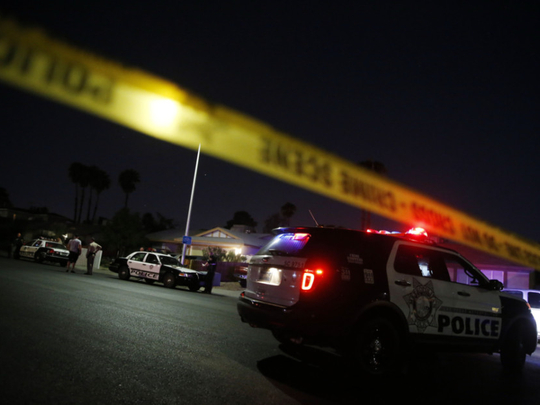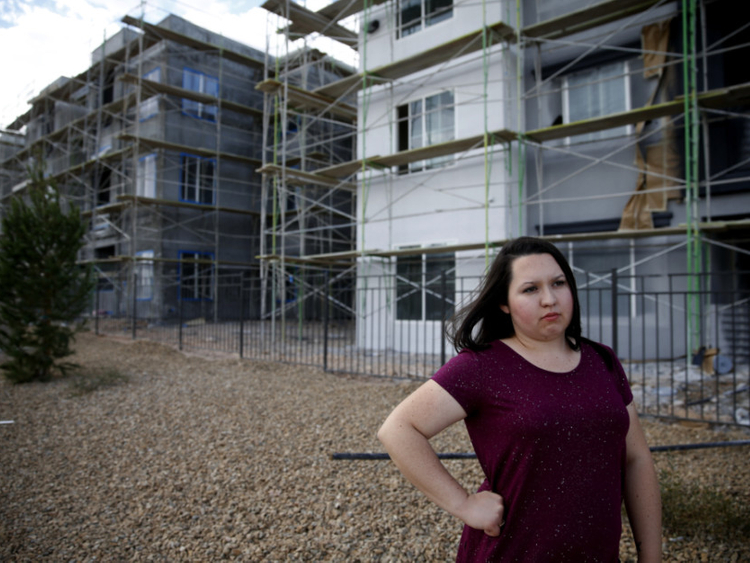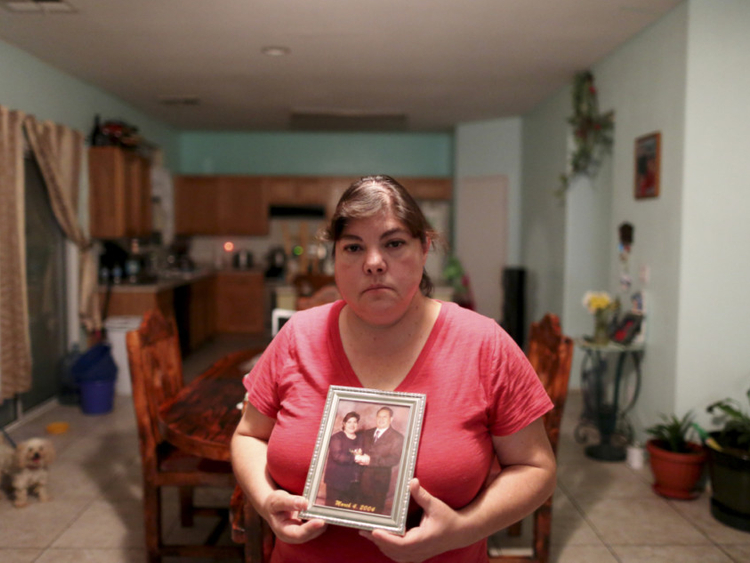
LAS VEGAS, Nevada
In the seven months since Heriberto Diaz Marcial was shot and killed walking home from his job as a casino porter on the Vegas Strip, church volunteers have knocked on hundreds of doors in his neighbourhood and handed out flyers seeking information. The police released blurry security footage of a grey sedan tied to his three killers. His wife, Maria Diaz, has gone on television to plead for help.
“I just want answers,” Diaz said as she sat in her living room, where a memorial poster from his co-workers at the Paris Las Vegas Hotel is still tucked beside the TV. “I want to see them face to face. I want to ask them, was it worth it?”
But so far, nothing.
Detectives in Las Vegas pride themselves on having one of the country’s better track records for solving homicides, clearing nearly 8 in every 10 cases while many other big-city departments struggle to solve half of their murders.
But like other big cities across the nation, Las Vegas is in the midst of a dramatic rise in homicides. The rising murder rate is now testing whether the 19 homicide detectives at the Las Vegas Metropolitan Police Department can keep solving those crimes as new calls pour in, from parks awash in heroin, from streets where freelance gang members are quick to draw their guns, and from poor neighbourhoods.
Disturbing factor
The nation’s murder rate, which has declined sharply for the last 20 years, rose by nearly 11 per cent in 2015, the largest single-year jump in nearly 50 years. But there are still far fewer murders than in the 1990s, and criminologists believe that many large cities are in a period in which they will see steep, and unpredictable, rises and falls in homicides, but that murder rates across the country will remain fairly constant.
A few cities were responsible for much of the increase, according to FBI figures.
In Las Vegas, the victims are a mix of African-Americans, whites and Latinos who have been killed during robberies, gang shootings, drug disputes and domestic violence incidents.
For homicide detectives here, the most disturbing factor may be that much of the killing is being committed by teenagers and men in their early 20s, many of whom do not understand the consequences of engaging in violence.
Recently, a 22-year-old, arrested after a double homicide, asked investigators if he was going to be released so he could start a new job. In another recent shooting, one 15-year-old boy killed another 15-year-old boy amid a barrage of 80 bullets during a gun battle that encompassed three crime scenes. The police are also finding more guns on the street — the per cent of homicides killed by guns has increased this year to 72 per cent, from 66 per cent last year.
“You find out there was a minor altercation and someone pulled out a gun,” said Lt Daniel McGrath, who heads the Police Department’s homicide section. “They are so quick to resort to violence that it goes from profanity to shooting.”
As homicides here have swelled to 125 so far this year — a 27 per cent increase over 2015 — detectives have watched caseloads grow to five or six apiece, and have become accustomed to phones ringing at 3am bringing more bad news.
“I’ve got a lot of tired people,” McGrath said.
The pace of the killings has been relentless, even for veteran detectives, who have seen the number creep steadily upward, from 84 in 2012, and are spending more of their time at crime scenes.
April was especially violent, with 24 homicides, the most in any month in the city’s history. While the pace has slowed somewhat, the count this year may surpass the 157 killed in 2006. The city’s worst year was 1996, when 167 people were murdered.
The homicide clearance rate for Las Vegas remains a point of satisfaction for investigators even as they are swamped with cases. Last week, the unit added two detectives to bring the total to 21, in order to help with the caseload, McGrath said.
And Las Vegas is still far better than most cities at clearing homicides — which generally means that a suspect has been arrested or identified.
In Chicago, for instance, detectives solve about 30 per cent of their cases, and Philadelphia and Baltimore investigators clear about 50 per cent. But clearance rates can swing drastically. Detroit, for instance, solved only about 9 per cent of its murders in 2012, but now reports a clearance rate of more than 60 per cent.
Clearance data, like all crime numbers, are self-reported by police departments, which arrive at them in various ways.
For instance, while some agencies include the solving of cold case murders to bolster their annual clearance rates, Las Vegas says it counts only cases solved in the year the crimes were committed.
Higher murder rates do not necessarily mean more unsolved cases. Criminal research has shown that resolving a case hinges largely on how quickly officers get to a murder scene, how many detectives work the case, and how motivated investigators are to solve it.
Poverty and drugs
When a killing happens in Las Vegas’ more violent neighbourhoods, volunteer teams allied with the police head to the scene and to hospitals and funerals to urge people not to answer blood with blood. Weeks later, they knock on doors with community policing units to urge witnesses to come forward and help find the killer.
“The root of this problem is poverty and drugs,” said Lekisha Hayes, who runs the Stars community development programme in her central Las Vegas neighbourhood of Cambridge Square. “Drugs are so much more powerful than a gang. People are hungry. It’s hard times.”
But for victims’ families, the math of murder is simple and unforgiving: More deaths across the Police Department’s jurisdiction of about 1.5 million people mean more open cases, more unanswered questions, more fears about killers still uncaught. And more families like the Diazes left in limbo.
On the other side of town, in Amber Santee’s garden apartment, memorial candles are clustered on the kitchen counter; dried rose petals from her father Mark’s funeral sit in a glass vase; and newspapers mentioning his unsolved April murder are piled on the kitchen table.
“This is my life now,” Santee, 28, said.
— New York Times News Service














